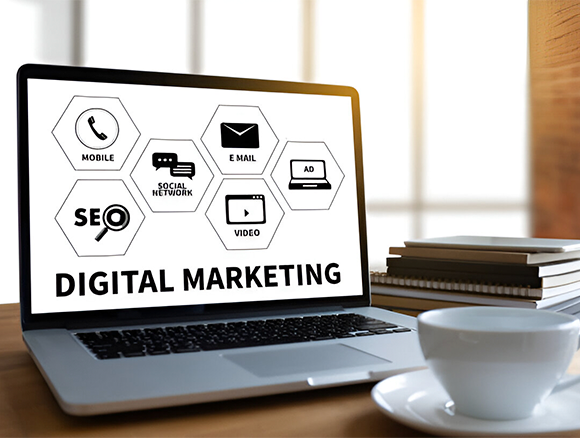After understanding how digital marketing can help your business grow and why it’s important, the next step is to implement an effective digital marketing strategy. Implementing a well-thought-out digital marketing plan can seem daunting, but with the right approach, it’s manageable and highly rewarding. In this blog, we will guide you through the practical steps needed to create and execute a successful digital marketing strategy for your business.
Step 1: Define Your Goals
Before diving into digital marketing, it’s essential to define what you want to achieve. Clear goals will guide your strategy and help you measure success.
Set Specific Goals
Start by identifying what you want your digital marketing efforts to accomplish. Your goals might include:
- Increasing website traffic
- Generating more leads
- Boosting online sales
- Enhancing brand awareness
- Improving customer engagement
Make sure your goals are specific, measurable, achievable, relevant, and time-bound (SMART). For example, instead of saying, “I want more website visitors,” a SMART goal would be, “I want to increase website traffic by 25% over the next six months.”
Prioritize Your Goals
Not all goals need to be pursued at once. Determine which goals are most important for your business right now and focus on those. This will help you allocate your resources more effectively.
Step 2: Understand Your Audience
Knowing your audience is crucial for creating a digital marketing strategy that resonates with them. Understanding who they are, what they need, and how they behave online will help you tailor your marketing efforts more effectively.
Create Buyer Personas
Buyer personas are detailed descriptions of your ideal customers. They include demographic information (age, gender, income), interests, challenges, and buying behaviors. Creating buyer personas helps you understand your audience better and tailor your marketing messages to meet their needs.
Analyze Audience Behavior
Use tools like Google Analytics, social media insights, and customer surveys to gather data about your audience’s online behavior. Find out where they spend their time online, what content they engage with, and how they interact with your brand. This information will guide your content creation and distribution strategies.
Step 3: Choose Your Digital Marketing Channels
There are many digital marketing channels available, but not all of them will be right for your business. Choose the ones that align with your goals and audience.
Social Media Marketing
Social media platforms like Facebook, Instagram, Twitter, and LinkedIn are great for building brand awareness, engaging with customers, and driving traffic to your website. Choose the platforms where your audience is most active.
Email Marketing
Email marketing is effective for nurturing relationships with your customers and leads. It’s a direct way to communicate with your audience, offering personalized content, promotions, and updates.
Content Marketing
Content marketing involves creating valuable content to attract and engage your audience. This can include blog posts, videos, infographics, and more. The key is to create content that addresses your audience’s needs and interests.
Search Engine Optimization (SEO)
SEO helps your website rank higher in search engine results, making it easier for potential customers to find you. This involves optimizing your website content, using relevant keywords, and improving site speed and mobile-friendliness.
Pay-Per-Click (PPC) Advertising
PPC advertising allows you to place ads on search engines, social media, or other websites, and you only pay when someone clicks on your ad. It’s a cost-effective way to drive targeted traffic to your site.
Step 4: Create Engaging Content
Content is at the heart of digital marketing. Whether it’s a blog post, video, or social media update, your content should engage your audience and encourage them to take action.
Develop a Content Plan
Plan your content ahead of time. Decide what types of content you will create, how often you will post, and which platforms you will use. A content calendar can help you stay organized and consistent.
Focus on Quality
Quality content is informative, engaging, and relevant to your audience. It should provide value, whether that’s educating your audience, solving a problem, or entertaining them. High-quality content is more likely to be shared, linked to, and ranked well by search engines.
Use Visuals
Visual content like images, videos, and infographics can make your content more engaging and easier to digest. Visuals also tend to perform well on social media and can help increase the reach of your content.
Step 5: Measure and Optimize Your Strategy
Once your digital marketing strategy is in place, it’s important to track its performance and make adjustments as needed.
Monitor Your Results
Use analytics tools to monitor the performance of your digital marketing efforts. Track metrics like website traffic, conversion rates, social media engagement, and email open rates. This data will help you understand what’s working and what’s not.
Adjust Your Strategy
Based on your analysis, make adjustments to your strategy. This could mean tweaking your content, trying new marketing channels, or refining your targeting. Digital marketing is an ongoing process, and continuous optimization is key to long-term success.
Ready to Transform Your Digital Marketing Strategy?
Don’t let your business fall behind in the digital age. Take the first step towards boosting your online presence and driving real results.
Contact me now to get started!
Hire me – https://www.upwork.com/freelancers/sahilkaul1996
How long does it take to see results from digital marketing?
Digital marketing results can vary depending on the strategies you use and your specific goals. Some tactics, like PPC advertising, can generate results almost immediately, while others, like SEO, may take several months to show significant progress. Consistency and continuous optimization are key to achieving long-term success.
Which digital marketing channels are best for my business?
The best digital marketing channels depend on your business type, target audience, and goals. Social media is great for brand awareness, email marketing is effective for customer retention, and SEO is essential for organic search traffic. A combination of these channels, tailored to your specific needs, usually works best.
Do I need a big budget to start with digital marketing?
No, digital marketing can be done on any budget. Many digital marketing channels offer affordable options, like social media advertising and email marketing. Start with a budget that you’re comfortable with and scale up as you see results. The important thing is to spend wisely and focus on high-impact strategies.
How can I measure the success of my digital marketing efforts?
You can measure success using various metrics, such as website traffic, conversion rates, social media engagement, and email open rates. Tools like Google Analytics and social media insights provide valuable data on how your campaigns are performing. Regularly review these metrics to understand what’s working and where improvements are needed.
What is the most important factor in a successful digital marketing strategy?
The most important factor is understanding your audience. Knowing who your customers are, what they need, and how they behave online allows you to tailor your digital marketing efforts effectively. Combine this understanding with clear goals, quality content, and consistent execution to achieve the best results.
Can I handle digital marketing on my own, or should I hire a professional?
It’s possible to handle digital marketing on your own, especially if you have the time and willingness to learn. However, hiring a professional or working with an agency can save you time and bring expertise to your strategy, leading to better results. If you’re just starting out or want to focus on other areas of your business, a professional can help you maximize your digital marketing efforts.
If you're looking for any services regarding Digital Marketing or Website Developement, Please Contact now.






Leave a Comment